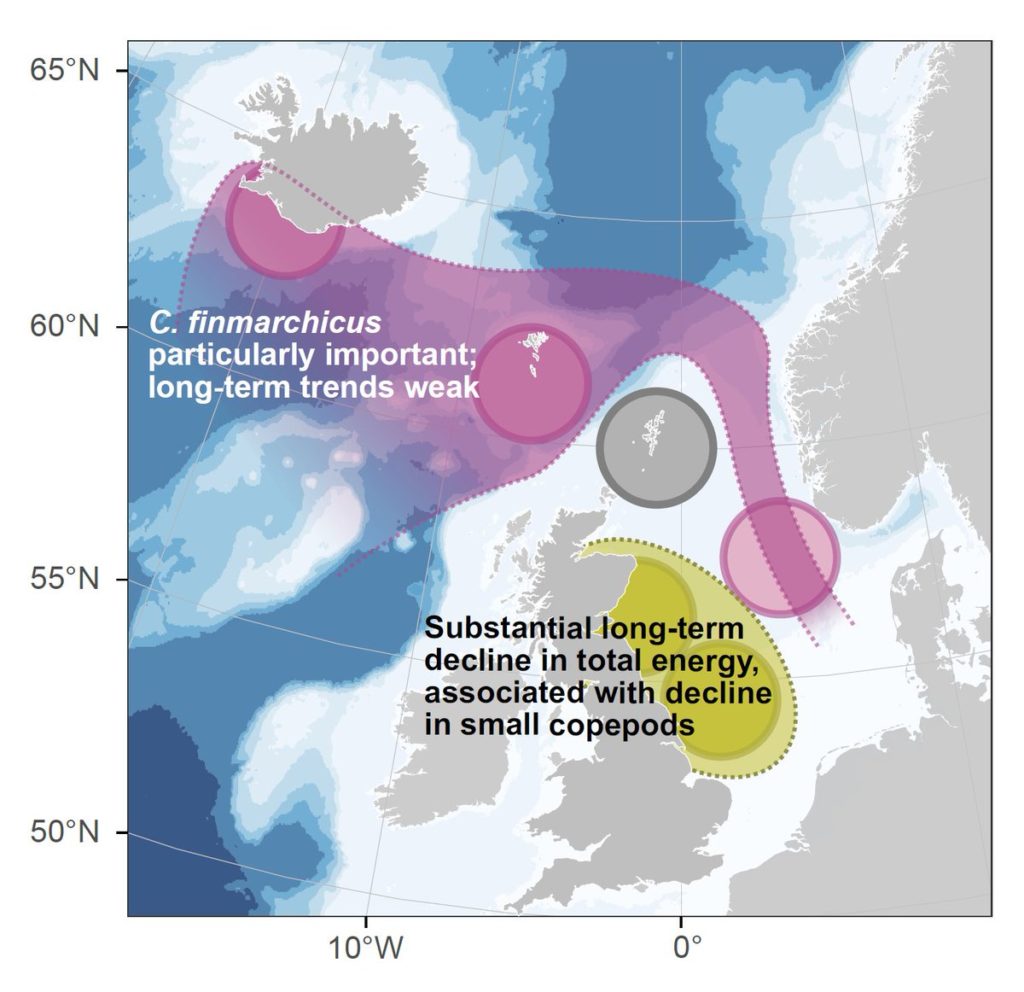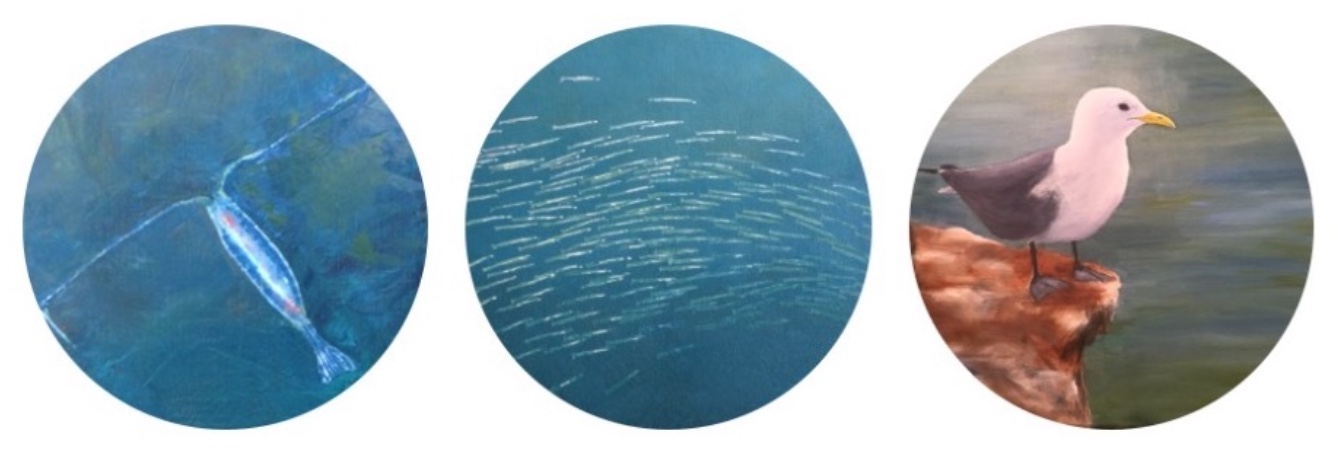Kittiwakes and many other UK seabirds have declined rapidly over several decades, alongside declines in the energy available in the ocean food chain that supports them. Agnes Olin’s PhD project (2018-2020) focused on sandeels as a link in this chain, looking upward to their spatial association with trends in kittiwake numbers, and downward to changes in plankton dynamics and the physical effects of climate change on the oceans.
Usually when we think of “climate, zooplankton, and North Atlantic food chains” we think of a few large iconic species: large copepods like Calanus, krill like Meganyctiphanes. In Olin et al. (ICES JMS, 2022), Agnes added up all the species that sandeels are known to eat in Continuous Plankton Recorder data and found that it makes history look different.

Eric Wagner wrote about this work for The Atlantic (“The Mystery of the Disappearing Seabird“, 2019), with equally sensitive attention to the birds themselves and the “elaborate meta-worlds” of the models we use to disentangle the lines of influence along the food chain and across the map.
The Hunterian Museum featured this work (from seabirds to origami copepods) in an exhibit called “Changing Climate, Changing Stories“.
Eve Mosher included my thoughts about it as a node in her work “Holding the Ocean” (2021).
- Olin et al (2020) “Spatial synchrony of breeding success in the blacklegged kittiwake Rissa tridactyla reflects the spatial dynamics of its sandeel prey“, Marine Ecology Progress Series 638:177-190 (open access)
- Olin et al (2022) Spatio-temporal variation in the zooplankton prey of lesser sandeels: Species and community trait patterns from the Continuous Plankton Recorder. ICES J Mar Sci, 79:1649-1661, 10.1093/icesjms/fsac101
